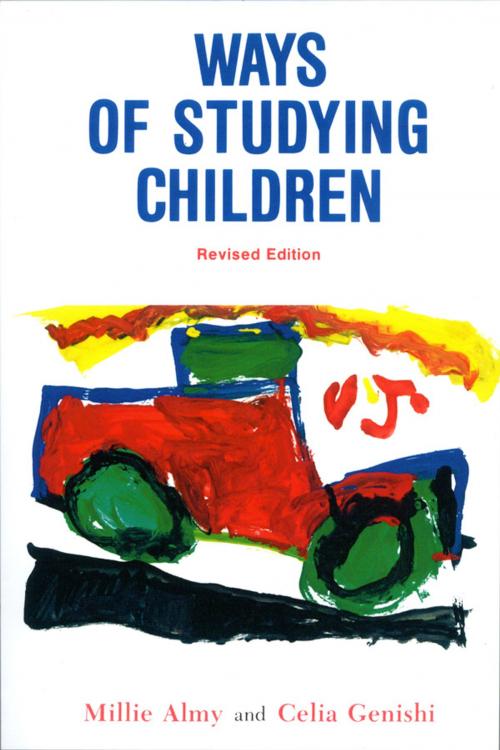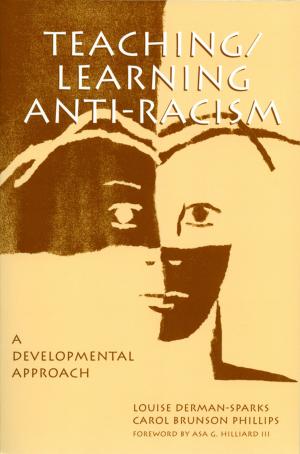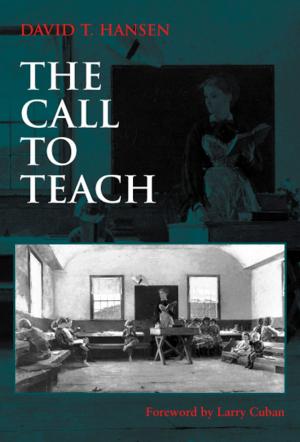Ways of Studying Children
An Observation Manual for Early Childhood Teachers
Nonfiction, Reference & Language, Education & Teaching, Preschool & Kindergarten, Educational Theory, Bilingual Education, Teaching| Author: | Millie Almy, Celia Genishi | ISBN: | 9780807776322 |
| Publisher: | Teachers College Press | Publication: | December 15, 2009 |
| Imprint: | Language: | English |
| Author: | Millie Almy, Celia Genishi |
| ISBN: | 9780807776322 |
| Publisher: | Teachers College Press |
| Publication: | December 15, 2009 |
| Imprint: | |
| Language: | English |
Since the publication of the widely used Ways of Studying Children in 1959, young children and education have experienced many new influences, including an increased emphasis on learning in the early years. Focusing on children under the age of eight, this enlarged edition analyzes theories and practices that have had an impact on the study of young children, such as the insights of Jean Piaget and the use of behavioral objectives.New applications of child study relevant to bilingual children, youngsters from diverse cultures, and handicapped children are provided. In a balanced way, the authors consider controversial questions of school records versus children's privacy, standardization and individual development, cognitive and emotional growth, excessive testing versus other ways of appraising progress. Up-to-date lists of suggested readings at the end of each chapter offer additional opportunities for learning and growth to experienced or beginning teachers.Reviewers praised Ways of Studying Children as practical and readable, valuable not only to teachers but also to supervisors, curriculum coordinators, parents, and others interested in education. The new edition adds special appeal for teachers in preschool programs, day-care centers, and kindergarten through second grade.The authors offer a detailed, caring perspective on individual child development that concentrates on the whole child. They are concerned not only with the study of young children, but also with the realities faced by early childhood teachers today.
“The wisdom of child sense and teacher sense in this book, together with its comfortable style, will, of themselves, give it an abiding place on my shelf.”
—From the Foreword by David Elkind
Since the publication of the widely used Ways of Studying Children in 1959, young children and education have experienced many new influences, including an increased emphasis on learning in the early years. Focusing on children under the age of eight, this enlarged edition analyzes theories and practices that have had an impact on the study of young children, such as the insights of Jean Piaget and the use of behavioral objectives.New applications of child study relevant to bilingual children, youngsters from diverse cultures, and handicapped children are provided. In a balanced way, the authors consider controversial questions of school records versus children's privacy, standardization and individual development, cognitive and emotional growth, excessive testing versus other ways of appraising progress. Up-to-date lists of suggested readings at the end of each chapter offer additional opportunities for learning and growth to experienced or beginning teachers.Reviewers praised Ways of Studying Children as practical and readable, valuable not only to teachers but also to supervisors, curriculum coordinators, parents, and others interested in education. The new edition adds special appeal for teachers in preschool programs, day-care centers, and kindergarten through second grade.The authors offer a detailed, caring perspective on individual child development that concentrates on the whole child. They are concerned not only with the study of young children, but also with the realities faced by early childhood teachers today.
“The wisdom of child sense and teacher sense in this book, together with its comfortable style, will, of themselves, give it an abiding place on my shelf.”
—From the Foreword by David Elkind















